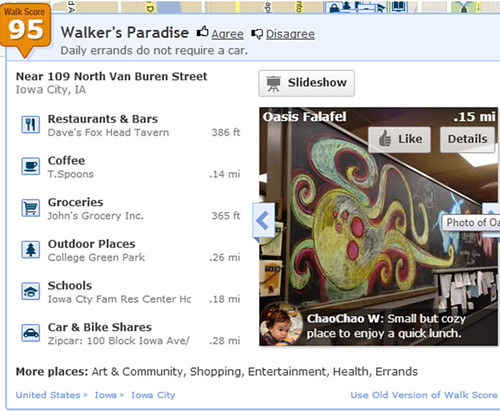Here's an
interesting article from Planetizen posted on 4/2/13
Author Brent
Todarian, the former Chief Planner for the city of Vancouver, BC, tells of how
over a 20 year period Vancouver has consistently enhanced their city using
Smart Growth principles.
Here in U-Heights
it has been hard to encourage some people to look at some higher density projects as
well as mixed use projects that are at the heart of smart growth, and would
help lead to a higher quality lifestyle for all of our residents. The two
phrases I've heard most frequently over the last four years from those opposed to One University Place are "We're not
a big city" and "We are a residential community." So when I read
the article above I was struck by several points, including the idea that we in
U-Heights are in essence "suburbia." Think about our town when you
read this quote from the article:
"Unfortunately,
even gentle forms of density can be especially controversial in the suburbs.
Something as simple as secondary suites in single detached homes or backyard
granny/”Fonzi” suites can lead to big battles. This has to change if
city-regions stand a chance of addressing their serious issues."
Substitute
"landlocked small towns" for "city-regions" in the last
sentence and it pretty well sums up the discussions regarding One University Place.
For quality
development, Todarian proposes three guidelines:
1. Aligning your
land-uses and how you get around!
2. Be unashamed
to have a consistently high urban design standard!
3. Amenities make
density enjoyable!
The first two
points, we have some history with. U-Heights successfully fought an attempt to
make Melrose Ave. a four lane through U-Heights. This is exactly what Vancouver
did in the '60's when they prevented highways from cutting the city into
pieces. We have had a high quality design standards as well,. Requiring a
Planned Unit Development (PUD) to be agreed to prior to approval of any major
redevelopment or infill project (Grandview and Birkdale) have assured
consistent and quality results.
As to the third
point, Todarian says it pretty succintly here:
"Amenities
support public life, and the denser it gets, the more such amenities are
needed. Design your density with parks, recreational and people places;
childcare and schools; and cultural, civic and heritage offerings.
On top of
publiclly owned amenities, density brings the population for market-driven
amenities like the coffee shop, pub, grocery store and farmers market.
These amenities,
public and privately owned, make density livable, lovable and successful, for
all ages and for families if you design for them all."
This is where
having some mixed use commercial at the intersection of our two arterial
streets (Melrose and Sunset) could have have tremendous payback to our
community.
 From Upworthy:
From Upworthy: 




